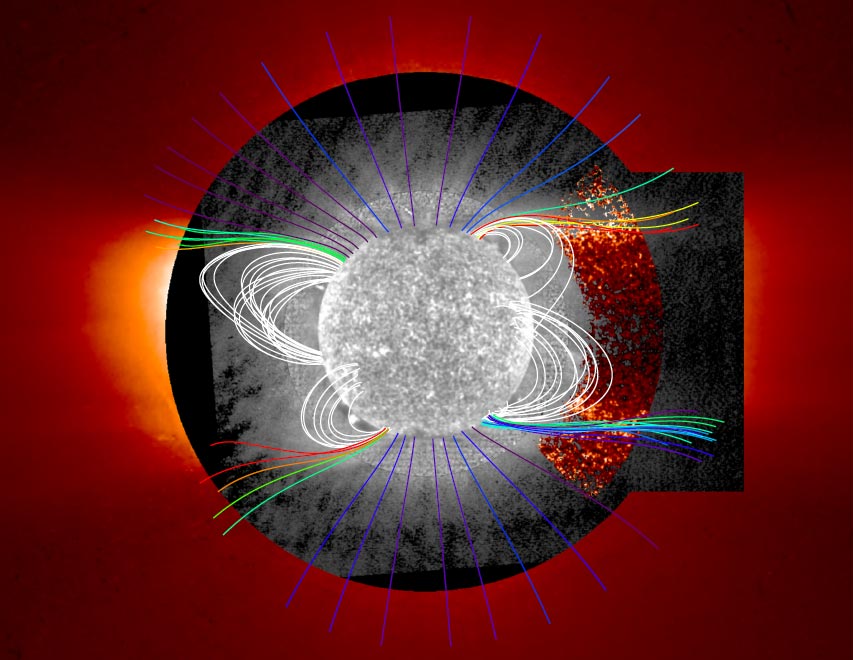
A composite image of the Sun showing the hydrogen (left) and helium (center and right) in the low corona.
Knowing the amount of helium in the solar atmosphere is important to understanding the origin and acceleration of the solar wind – the constant stream of charged particles from the Sun.
In 2009, NASA launched a sounding rocket investigation to measure helium in the extended solar atmosphere – the first time we’ve gathered a full global map.
Previously, when measuring ratios of helium to hydrogen in the solar wind as it reaches Earth, observations have found much lower ratios than expected.
Scientists suspected the missing helium might have been left behind in the Sun’s outermost atmospheric layer – the corona – or perhaps in a deeper layer.
To measure the amount of atmospheric helium and hydrogen, NASA’s Helium Resonance Scattering in the Corona and Heliosphere, or HERSCHEL, sounding rocket took images of the solar corona.
Comparing with images from ESA/NASA’s Solar and Heliospheric Observatory (SOHO), the scientists were able to show the abundance at the mid latitudes overlaps with where Sun’s magnetic field lines open out into the solar system.
This shows that the ratio of helium to hydrogen is strongly connected with the magnetic field and the speed of the solar wind in the corona.
The equatorial regions, which had low helium abundance measurements, matched measurements from the solar wind near Earth.
This points to the solar atmosphere being more dynamic than scientists thought.
HERSCHEL remotely investigates the elemental composition of the region where the solar wind is accelerated, which can be analyzed in tandem with in situ measurements of the inner solar system, such as those of the Parker Solar Probe.
While the heat of the Sun is enough to power the lightest element – ionized hydrogen protons – to escape the Sun as a supersonic wind, other physics must help power the acceleration of heavier elements such as helium.
Thus, understanding elemental abundance in the Sun’s atmosphere, provides additional information as we attempt to learn the full story of how the solar wind is accelerated.
Two new instruments – Metis and EUI on board ESA/NASA’s Solar Orbiter – are able to make similar global abundance measurements and will to help provide new information about the helium ratio in the corona.
Reference: “Global helium abundance measurements in the solar corona” by John D.
